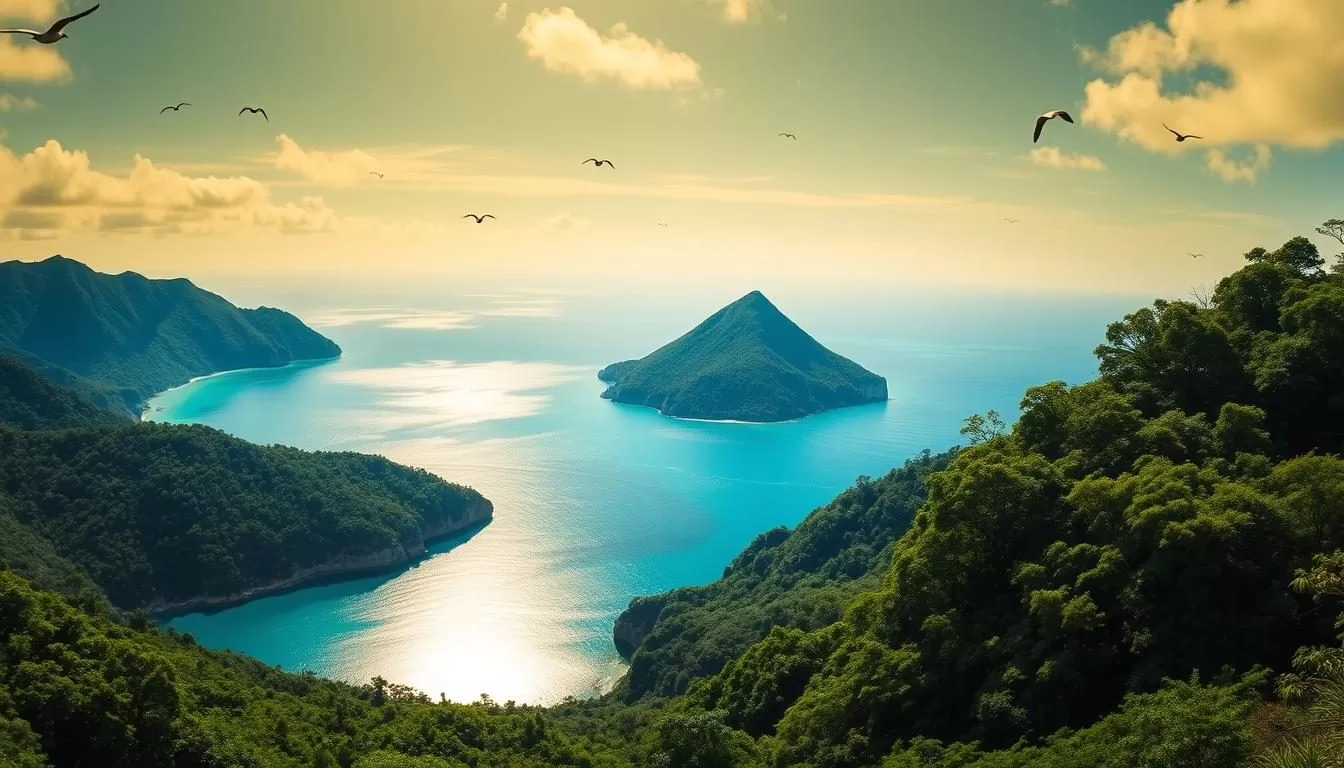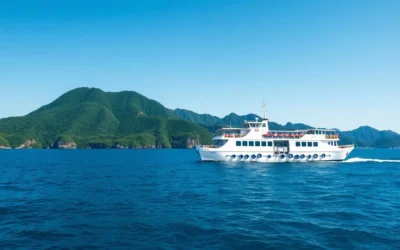✓ Accommodations✓ Flights✓ Rental Cars
Discover the remote paradise of Ogasawara, a UNESCO World Heritage Site located 1,000 kilometers south of Tokyo. This unique archipelago comprises over 30 islands, with only Chichijima and Hahajima being inhabited, offering an exclusive experience away from mass tourism.
The park’s distinctive ecosystem has evolved in isolation, creating a treasure trove of endemic species found nowhere else on Earth. Often called the “Galapagos of the East,” Ogasawara boasts remarkable biodiversity and evolutionary significance, making it a bucket-list destination for nature lovers. Visitors can enjoy various activities, from marine adventures to hiking pristine trails, immersing themselves in the untouched nature of this incredible national park.
Discovering Ogasawara National Park
As you step into Ogasawara National Park, you’re not just entering a national park; you’re entering a world of untouched beauty. This archipelago, located over 1,000 km away from mainland Japan, is a testament to the wonders of nature and the importance of conservation.
A Remote Paradise in Tokyo Prefecture
Ogasawara National Park is a part of Tokyo Prefecture, despite being far from the mainland. This remote location has allowed the islands to maintain their pristine condition, offering a unique blend of endemic species and untouched landscapes. Visitors are required to take biosecurity measures seriously, such as washing the soles of their shoes when entering and exiting the islands, to protect the delicate ecosystem.
World Heritage Status and Unique Ecosystem
In 2011, UNESCO designated Ogasawara as a World Heritage Site, recognizing its exceptional natural processes and biodiversity. The park is home to over 100 endemic plant species and numerous endemic animal species that have evolved in isolation, making it a living showcase of evolutionary processes. The comparison to the Galapagos Islands is not coincidental; Ogasawara National Park is often referred to as the “Galapagos of the East.”
| Ecosystem Feature | Description | Conservation Status |
|---|---|---|
| Endemic Plant Species | Over 100 species unique to the area | Protected through strict biosecurity measures |
| Marine Biodiversity | Rich in marine life, including coral reefs | Conservation efforts in place to protect marine habitats |
| Eco-Tourism Model | Pioneer in eco-tourism in Japan | Promotes sustainable visitation and conservation |
Ogasawara National Park is not just a destination; it’s an experience that combines nature, adventure, and education. As you explore the park, you’ll have the opportunity to appreciate its unique ecosystem and understand the importance of preserving it for future generations. The park’s commitment to eco-tourism ensures that your visit contributes to the conservation of this incredible sea of biodiversity.
Getting to Ogasawara National Park
To experience the untouched beauty of Ogasawara National Park, you’ll first need to plan your journey carefully. The park is located in a remote area, and getting there requires a significant amount of time and preparation.
The Ogasawara Maru Ferry Experience
The primary means of reaching Ogasawara National Park is by ferry, specifically the Ogasawara Maru, which departs from Tokyo’s Takeshiba Pier. This journey is approximately 24 hours, so it’s essential to be prepared for the long haul. As you travel, you’ll be surrounded by the vast ocean, and the experience can be quite rough, especially during typhoon season.
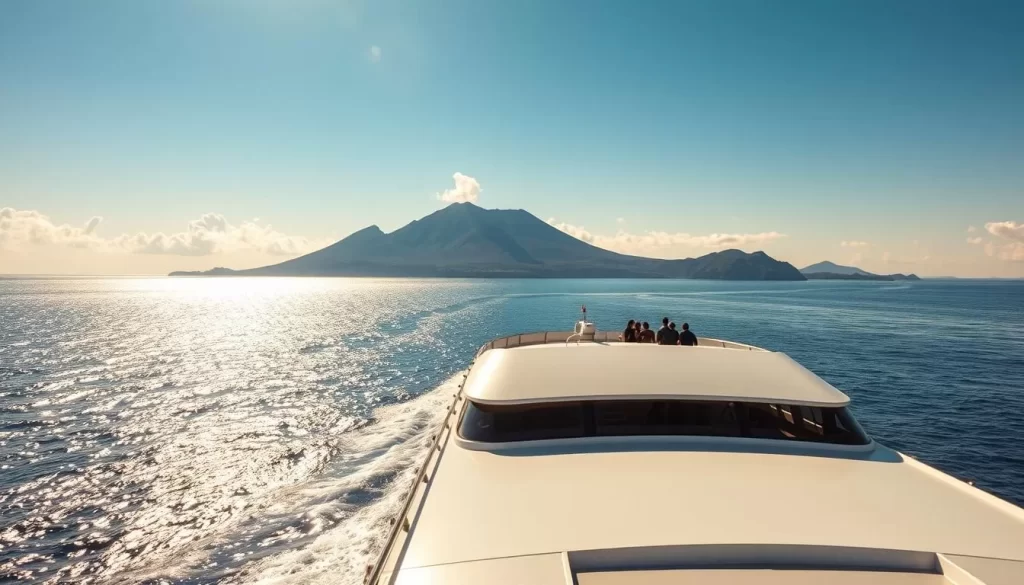
What to Pack for Your Journey
When traveling to Ogasawara National Park, it’s crucial to pack wisely. Here are some essentials to consider:
- Motion sickness medication to help alleviate the rough seas
- Lightweight, quick-dry clothing for subtropical weather, along with a light jacket for cooler moments
- Reef-safe sunscreen and insect repellent to protect yourself from the elements
- A reusable water bottle and comfortable walking shoes for exploring the islands
- Snorkeling gear, if you have your own, to make the most of your marine adventures
By being well-prepared, you’ll be able to enjoy your journey and make the most of your time at Ogasawara National Park with the people you care about.
Chichijima Island: Gateway to Ogasawara
Chichijima Island serves as the perfect gateway to exploring the wonders of Ogasawara National Park. As the main island, it offers a variety of experiences that showcase the natural beauty and unique biodiversity of the area.
Futami Port and Central Area
Futami Port is the central hub of Chichijima, where you’ll find most of the island’s amenities. The central area around the port is bustling with activity, offering a glimpse into local life. You can explore the nearby shops, restaurants, and other facilities that cater to both locals and tourists.
Best Beaches on Chichijima
Chichijima is home to some of the most beautiful beaches in Ogasawara, including Washington Beach, known for its clear waters and picturesque surroundings. The island’s beaches are perfect for swimming, snorkeling, and simply relaxing in a serene environment.
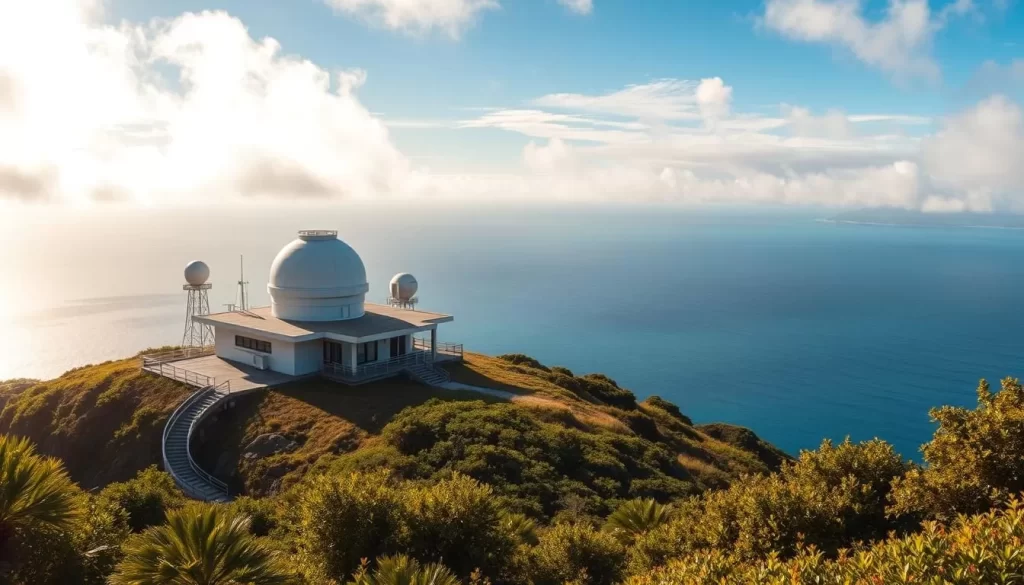
Scenic Viewpoints and Observatories
The island boasts several scenic viewpoints and observatories. The Weather Station Observatory on the west side is ideal for whale watching during winter and offers spectacular views of the sunset. Mount Asahi, located east of Futami Port, provides panoramic views of the harbor and surrounding ocean. Additionally, Nagasaki Observatory at the northern tip offers stunning vistas of Washington Beach and the island of Anijima.
Visitors can time their trips to these viewpoints for optimal experiences, such as early morning for bird watching or evening for breathtaking sunsets.
Marine Adventures in Ogasawara National Park
The waters of Ogasawara National Park are a haven for marine enthusiasts, providing a unique opportunity to explore an untouched underwater world. With its rich biodiversity and crystal-clear waters, Ogasawara is an ideal destination for those looking to engage in various marine activities.
Snorkeling in Crystal Clear Waters
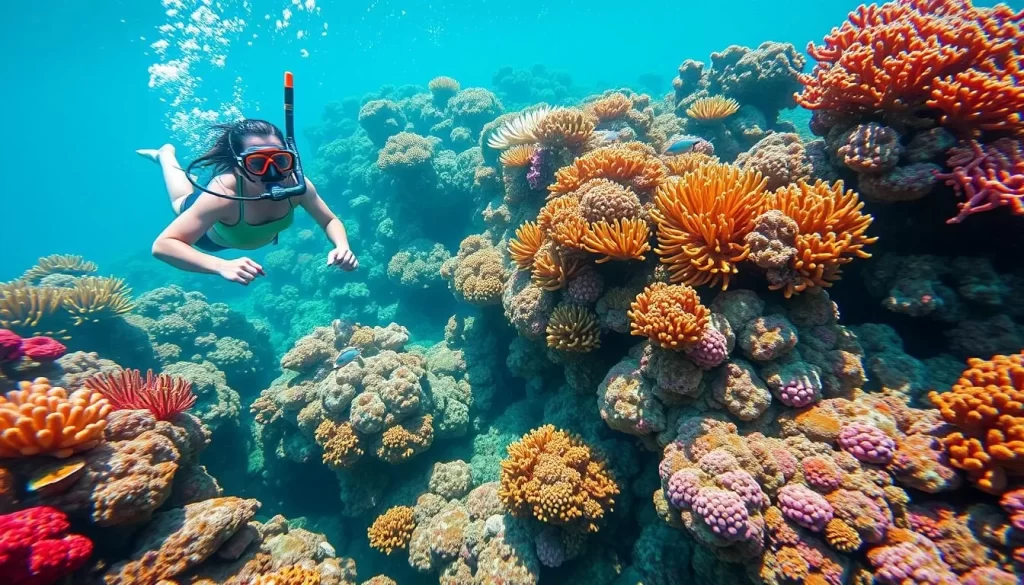
Snorkeling in Ogasawara National Park offers a glimpse into an underwater world teeming with life. The park’s clear waters make it an ideal spot for snorkeling, with numerous snorkeling tours available to explore the best sites.
Scuba Diving Experiences
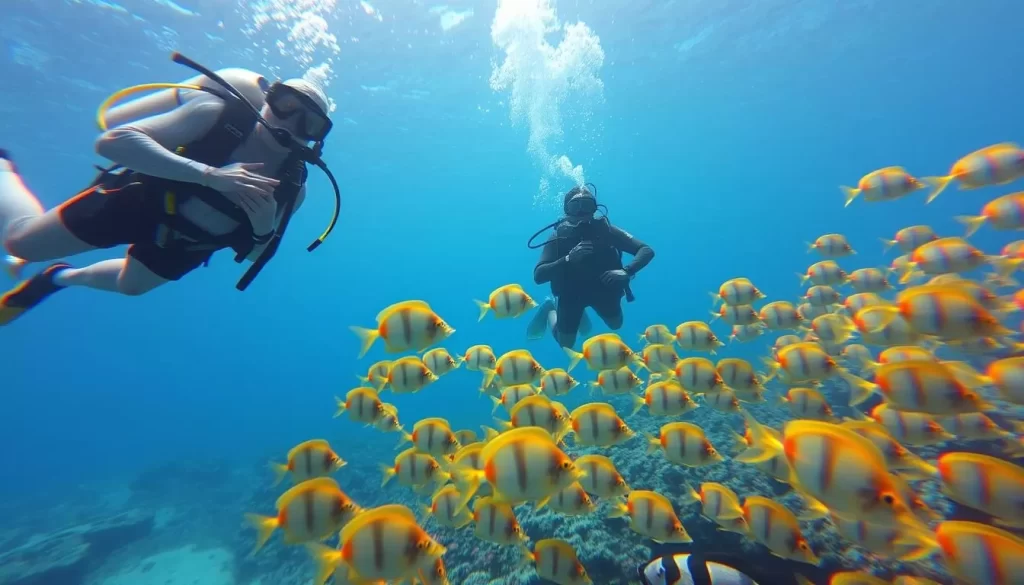
For those looking for a deeper dive, Ogasawara offers exceptional diving experiences. The park’s waters are home to a diverse array of marine life, making every dive a new adventure.
Swimming with Dolphins

One of the park’s signature activities is swimming with wild Indo-Pacific bottlenose dolphins and spinner dolphins in their natural habitat. Join specialized dolphin-swimming tours operated by experienced guides who prioritize respectful wildlife interactions. You’ll have the chance to learn about the resident dolphin pods that inhabit the waters around Ogasawara year-round, making it one of the most reliable places in Japan to encounter these intelligent marine mammals.
To ensure a meaningful encounter, it’s essential to follow ethical guidelines and your guide’s instructions. With the right equipment and a responsible approach, you’ll be able to enjoy this unique ocean activity while contributing to the conservation of these magnificent creatures.
Whale Watching in Ogasawara
Experience the thrill of whale watching in the pristine waters of Ogasawara National Park. The park’s remote location in the Pacific Ocean makes it a unique spot for observing these magnificent creatures in their natural habitat.
Best Seasons for Whale Sightings
The best time for whale watching in Ogasawara is during the spring when various species migrate through the area. This season offers a high chance of spotting different types of whales.
Types of Whales You Might Encounter
Ogasawara’s waters are home to a diverse range of whale species. You might see humpback whales, minke whales, and other marine life, making each tour a unique experience.
Recommended Whale Watching Tours
Choose from a variety of whale watching tours operated by experienced local companies. Consider half-day excursions that last 3-4 hours, or opt for specialized photography tours designed to capture the perfect shot.
Exploring Minamijima Island
The uninhabited Minamijima Island is a pristine paradise that beckons nature lovers and adventure seekers alike. To preserve its delicate ecosystem, visiting the island requires accompaniment by a certified guide approved by the Tokyo Metropolitan Government.
The Natural Archway and White Sand Beach
Minamijima Island boasts a stunning natural archway and a picturesque white sand beach, making it a photographer’s paradise. The island’s unique landscapes are a result of its untouched condition, preserved through strict conservation efforts.
Conservation Rules and Guided Tours
To protect Minamijima’s ecosystem, several rules are in place:
- Visitors must be accompanied by a certified guide on a tour.
- The daily visitor limit is 100 people to minimize human impact.
- Visitors are required to follow designated wooden walkways to prevent soil erosion and protect vegetation.
- Visits are typically limited to 2 hours, and activities like swimming or snorkeling may be restricted at certain times of the year to protect sea turtles and other marine life.
By adhering to these guidelines, you contribute to the preservation of Minamijima’s pristine condition, ensuring its beauty for future generations.
Hiking and Trekking Opportunities
As you explore Ogasawara National Park, you’ll discover a variety of hiking trails that showcase the islands’ natural beauty. The park offers numerous trails for different skill levels, ensuring that every visitor can experience the unique nature and biodiversity of the area.
Chihiroiwa (Heart Rock) Trail

The Chihiroiwa or Heart Rock Trail is a popular hike that leads to a stunning natural rock formation. This trail is a great way to experience the unique landscapes of Ogasawara with a guide who can provide insights into the local flora and fauna.
Mount Asahi Hike
The Mount Asahi hike offers breathtaking views of the surrounding islands and the opportunity to spot endemic species that are found nowhere else on Earth. This hike is a great way to explore the area‘s natural beauty.
Wildlife Spotting on Trails
While hiking through Ogasawara’s trails, keep an eye out for the diverse wildlife, including the critically endangered Japanese wood pigeon. Visiting the Higashidaira Akagashira Karasubato (Red-headed Wood Pigeon Sanctuary) with a guide can enhance your experience, allowing you to spot rare and endemic species in their natural habitat.
Some highlights of hiking in Ogasawara include:
– Discovering the unique wildlife while hiking the islands’ numerous trails.
– Visiting the Higashidaira Akagashira Karasubato with a guide.
– Joining specialized night tours to observe the elusive Bonin fruit bat.
– Learning to identify endemic plant species along the trails.
– Understanding the conservation challenges and how responsible hiking practices help protect these species.
Hahajima Island Adventures
As you explore Ogasawara National Park, Hahajima Island promises an unforgettable experience surrounded by the vast sea. This island, with its lush landscapes and untouched natural beauty, is a haven for those seeking adventure and tranquility.
Getting to Hahajima from Chichijima
To reach Hahajima, you can take a ferry from Chichijima. The journey offers breathtaking views of the ocean and is a great opportunity to spot marine life. The ferry ride is relatively short, making it an ideal day trip or a longer stay to explore the island’s hidden gems.
Mount Chibusa and Mount Kofuji Hikes
Hahajima offers several hiking trails, including those leading to Mount Chibusa and Mount Kofuji. The hike to Mount Kofuji is particularly popular, with trails branching off to secluded beaches. The panoramic views from the top are rewarding, making the hike worthwhile.
Secluded Beaches and Snorkeling Spots
The island is home to secluded beaches with pristine sand, such as Minamizaki Beach, known for its translucent waters and vibrant coral reefs, making it perfect for snorkeling. You can access these beaches via hiking trails that branch off from the main path, adding an element of adventure to your beach experience.
| Beach Name | Features | Access |
|---|---|---|
| Minamizaki Beach | Translucent waters, coral reefs | Hiking trail from Mount Kofuji path |
| Miyuki Beach | Fossil formations, serene environment | Hiking trail from Mount Kofuji path |
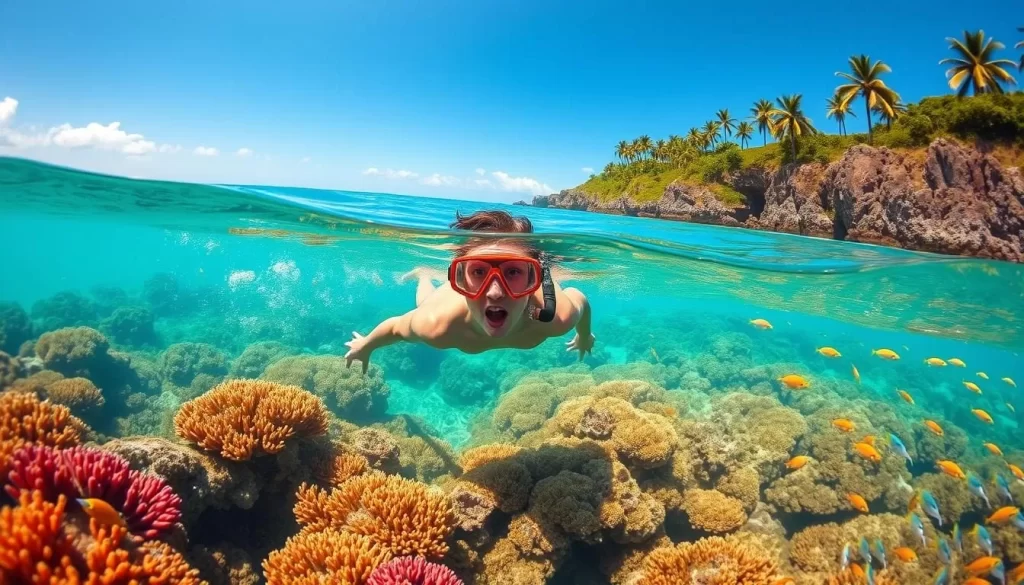
Eco-Tourism and Conservation in Ogasawara
Ogasawara National Park stands as a pioneering example of eco-tourism in Japan, embracing conservation efforts to protect its unique biodiversity. As you explore the Ogasawara Islands, you’ll witness firsthand the delicate balance between tourism and conservation.
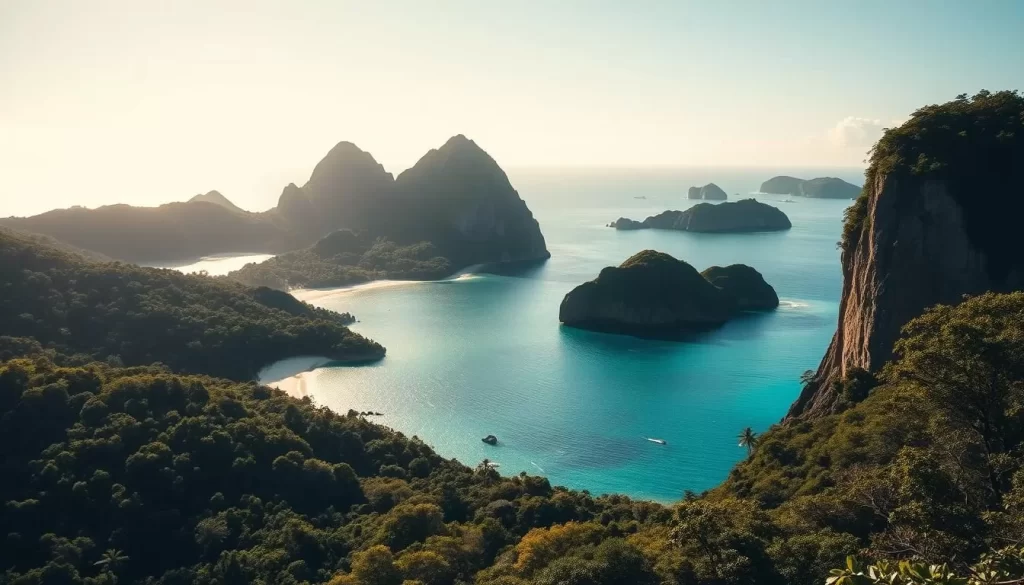
Endemic Species and Their Protection
The Ogasawara Islands are home to a variety of endemic species found nowhere else on Earth. To protect these unique creatures and their habitats, the park has implemented strict conservation measures. This includes protecting the natural habitats of these species and educating visitors on the importance of conservation.
Efforts to safeguard the biodiversity of Ogasawara National Park involve continuous monitoring of the ecosystem and research into the impacts of tourism and invasive species.
Visitor Guidelines and Responsible Tourism
As a visitor to Ogasawara National Park, you play a crucial role in its conservation. Follow the essential guidelines: practice biosecurity by cleaning your shoes, stay on designated trails, and respect wildlife by keeping a safe distance. Additionally, be aware of visitor number limitations in sensitive areas to minimize human impact.
By choosing tour operators committed to sustainable practices, you support local conservation efforts and contribute to the preservation of this unique ecosystem for future generations.
Conclusion: Planning Your Perfect Ogasawara Adventure
Ogasawara National Park is a destination that promises an unforgettable journey, rich in marine life, hiking trails, and pristine beaches. As you plan your trip, consider the diverse range of activities available, from snorkeling and diving to hiking and wildlife observation.
To make the most of your visit, plan for a minimum stay of 5-6 days. This allows you to experience the highlights of both Chichijima and potentially Hahajima, taking into account the ferry schedule. Consider the seasonal variations: summer for warm waters and snorkeling, winter for whale watching.
Book your accommodations and tours in advance, especially during peak seasons. Embracing the unique rhythm of island life and supporting local businesses by choosing locally-owned accommodations and dining at island restaurants will enhance your experience. Be prepared for variable weather conditions and respect the park’s conservation efforts to ensure a sustainable and enjoyable trip to this remarkable island paradise.
The above is subject to change.
Check back often to TRAVEL.COM for the latest travel tips and deals.
